|
|
Chris De Herrera's Windows CE Website |
|---|---|
About |
|
| By Chris De Herrera Copyright 1998-2007 All Rights Reserved A member of the Talksites Family of Websites Windows and
Windows CE are trademarks of
Microsoft All Trademarks are owned |
sonicadmin - Easy Windows Network
Administration using your Pocket PC
By Chris De Herrera, Copyright 2002
Version 1.00 Revised 9/17/2002
[an error occurred while processing this directive]
Sonic
Mobility offers an easy way for network administrators to manage their
network servers anytime, and anywhere using their Pocket PCs called sonicadmin.
The concept behind sonicadmin is to allow network
administrators to have functionality similar to the Administrative Tools
in Windows 2000 server on their Pocket PC.
Of course Sonic Mobility also works with Windows NT servers as well
as it has a command line interface for any non-Windows network device that
supports Telnet or SSH like Unix, Linux, printers, switches, routers,
databases, etc.
Pocket PC Summit – Hands
On Experience
I have personally used sonicadmin
to manage the HP Proliant ML-370 server at the Pocket PC Summit. The HP server was used to provide the local web server and
NAT (Network Address Translation) to allow users to access the Internet.
Barry Shilmover, Sonic Mobility’s Chief Technical Evangelist, was
kind enough to install sonicadmin on the server the first day I had
it installed and it sure came in handy!
During the show, I heard comments from different users about having
problems getting a DHCP (Dynamic Host Configuration Protocol) assigned IP
address. Well with sonicadmin,
I was able to go out and see that the DHCP service was running!
Also, I was able to stop and start it as well right from my Pocket
PC. Later on I figured out that the problem was not the server
but the driver that Symbol was installing that was not displaying the
assigned IP address for approximately 2 minutes after it had been
assigned. I did find out that there were a few things I wish that sonicadmin
would add to Sonic Mobility. Since
I was working with DHCP, I was unable to see a list of DHCP clients. So I had to switch to the cumbersome use of Terminal
Services client to view the DHCP client list.
I sure could see why sonicadmin is so much easier to use!
It fits on the screen much better than trying to use a 800 x 600
display with a Pocket PC! Overall sonicadmin’s ability to allow me to manage
the HP server at the Pocket PC Summit contributed to the success of the
event. I was able to
configure and manage the server without having to login at the console for
the whole event!
Also, I was able to confirm the resources that were being used on the server. So I was able to monitor the amount of ram and disk space in use

Barry Shillmover , Sonic Mobility's Evangelist installing sonicadmin
on the Pocket PC Summit Server at the Loews Hotel in Philadelphia!
Security
Sonic Mobility has not
forgotten about the importance of keeping your server information secure.
It offers multiple encryption options including RC4256 (we use 256
bit RC4 in version 2.5, 2.6 will use 128 bit Triple DES which is the US
government and military standard) bit keys, which are stronger than the
128 bit key you use to access your brokerage account via the web! Sonicadmin also requires the network administrator to
register both usernames and Pocket PCs for enhanced security.
This way if a Pocket PC is lost or stolen, the network
administrator can easily disable that specific Pocket PC without
compromising all other users access to sonicadmin. Also, they have
implemented the ability list what servers the users can access This allows
a network administrator to allow a local administrator to manage his
server and still allow the network administrator to manage all servers
without extra effort. It’s
this kind of attention to detail that really shows how well sonicadmin has
been thought out.

Monitoring the Pocket PCs Functions
Functionality
sonicadmin provides the
ability to manage users, printers, services, processes, monitor server
statistics and review the event logs (also, DNS).
Further you are able to use Sonic Admin to edit system files,
(Also, full file explorer to delete, move, copy, paste and even email
files from a managed server) run command line programs and even reboot or
shutdown a server (and manage power).
Also, it expands what you can do beyond the server, by adding
Telnet and SSH access to Linux server, routers and firewalls.
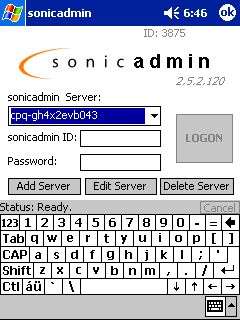
Logging into sonicadmin

Selecting the server in the workgroup

Overview of Features
Managing Users, Shares,
Printers, Services and Processes
When you choose the option to
view the Users, you can reset their account and change their password.
With the Printers, you can delete a print job and monitor the
status of pending print jobs. With
the Services function you can manage the files that are opened on the
server real time. With the Services function, you can see what
services are running, start and stop the services.
With the processes function, you can see what processes are running
and terminate processes.

View Files one in Shares
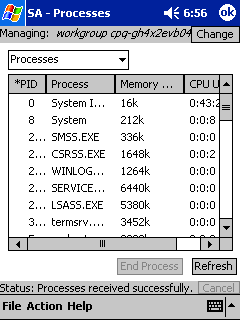
Manage Processes
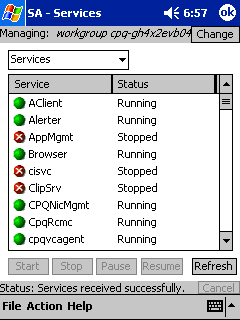
Manage Services
Monitor Server Statistics
and Event Logs
With sonicadmin, you can
real time monitor the overall health of your server.
This would include the ability to see how much disk space is free
for each drive and how much ram is being used as well as the percentage of
CPU utilization. Further you
can review the system, application and security event logs and view each
message in detail, just like you can on your server.
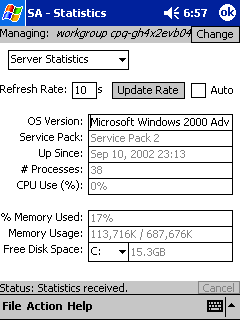
Review System Health
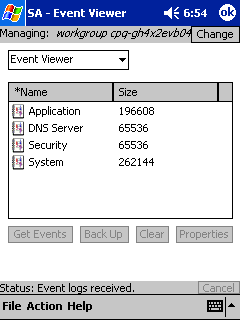
Event Viewer

System Events
Managing the Server
sonicadmin allows the
administrator to perform powerful functions like shutdown and rebooting a
server and also use the Power (powerrover) option.
Also, it offers the ability to run any program
or command that can be run from a command line, like Ping or Route
Print or IPCONFIG –ALL. It
also allows you to manage files on the server, including moving them or
deleting them.

Power Management

Command Prompt
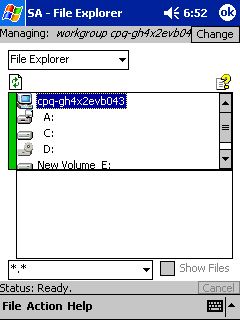
File Explorer
Beyond the Server
With the addition of Telnet and
SSH, Sonic Admin (sonicadmin) allows network administrators to access
remote network equipment and servers.
This means that they can configure Cisco routers and Linux servers
without having to switch to other programs or load additional software.
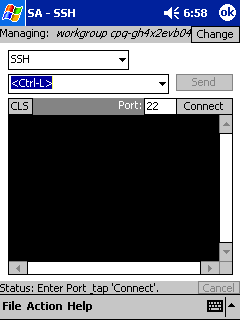
SSH Client
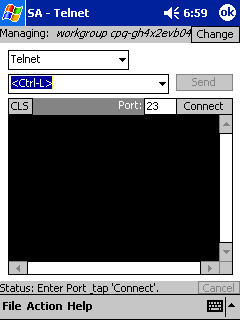
Telnet Client
Conclusion
Overall, Sonic Mobility provides a secure way to make sure that you can easily monitor your network server from your Pocket PC. Since it uses TCP/IP you can access it from anywhere – Literally even via a Pocket PC Phone Edition using GPRS or GSM depending on how your network is setup. Sonicadmin starts at $349 USD per server and discounts start at 10 servers plus site licenses are available for over 50 servers. You can purchase it right at Sonic Mobility!
[an error occurred while processing this directive]


